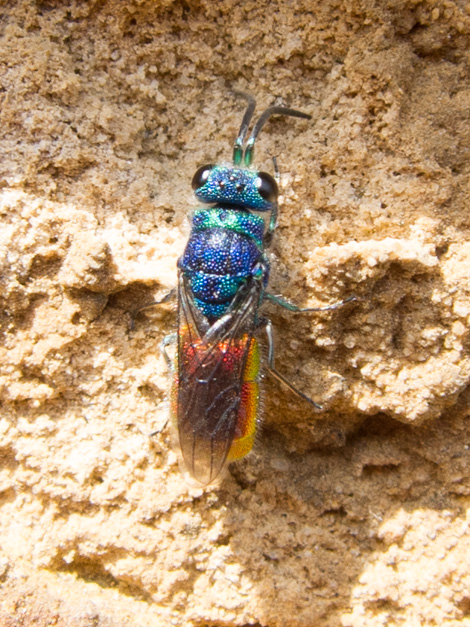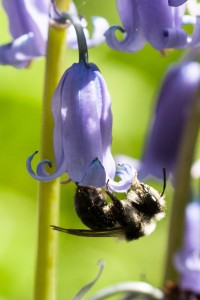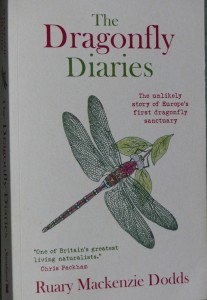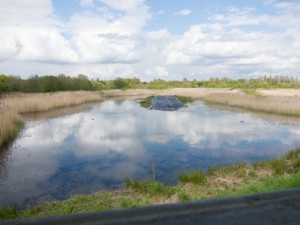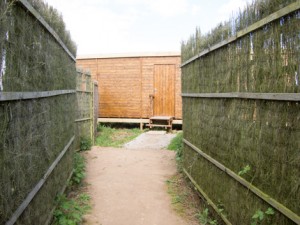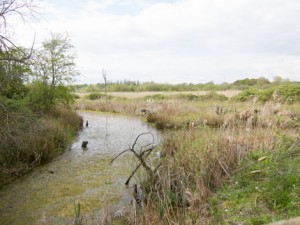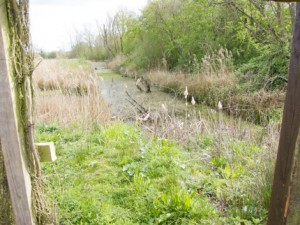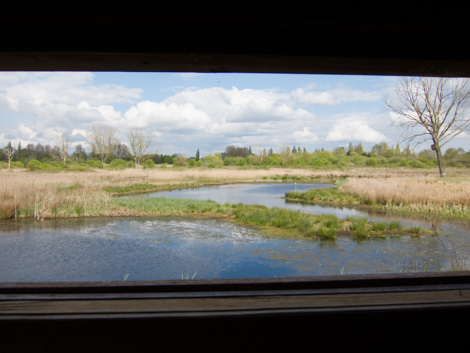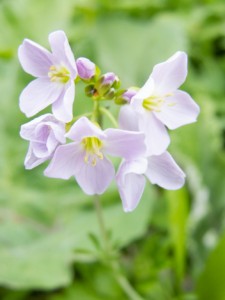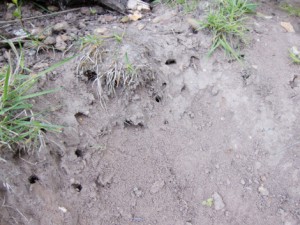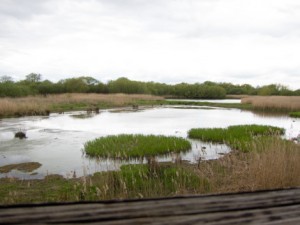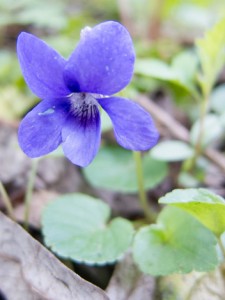I am eagerly awaiting the first chicks from the common terns at the Country Park so I am going to try and get down there once or twice each week for the next month or so (not a hardship). There are no signs of chicks yet, I am sure there would have been more bringing of fish if there were, but I think there are at least 6 or 7 nesting pairs. The new tern rafts give a pretty good view of the terns and there were several looking as though they were quite settled, some were on scraped up shingle, one was redistributing shingle around the ‘nest’ and I saw a change over between a pair – so definitely some eggs incubating going on. There was quite a bit of bickering and fighting amongst the terns on the raft and even some mating, so I think chicks might be hatching over the space of a few weeks.
However, the terns are not the only nesting birds at the Country Park. For the first time I have found a grey heron’s nest. The last time I was there the heron was sitting there, looking pretty comfortable. This time it looked empty. Fortunately, when I had another look a bit later on, one of the parents had come back and was feeding a youngster. It seems that there is only one in there , so perhaps they are new parents, or the cold weather has reduced the brood. Either way, the chick didn’t look very old – it was definitely grey and tried to flex its stubby little wings. I shall have to keep an eye on this nest as well as the terns!
Anyway, back to the high drama. Other than the herring and lesser black backed gulls that the terns often had to chase off (we watched one almost drowned after being forced into the water), they also had a go at some canada geese and a mute swan. But this isn’t the drama I am referring to.
As well as a mallard with eight ducklings and a pair of greylag geese with four goslings (very different parental approach between the ducks and geese), the aforementioned pair of canada geese also have four goslings. The reason that they incurred the wrath of the terns was because they had been chased halfway along the reservoir by a male mute swan with a huge attitude problem. I know that despite appearances swans are not at all serene and peaceful, but this one seems to see everything as a threat. Suffice it to say there is only the one pair of swans at this end of the water (and they have six cygnets).
At no point did this family (four adults and four goslings) go anywhere near the cygnets, but he chased them across the water and at one point seemed to separate out one of the goslings from the rest (a bit like the sheepdog on One Man and His Dog). The adults would attack the male swan, diverting his attention so the gosling could get further away. But, sometimes this wasn’t enough and several times one or more of the goslings dived underwater (they can stay under for quite some time) to avoid being killed. One poor gosling got completely separated and was chased away from the family group by the swan. Two of the adults worked together to try and get the gosling to safety, whilst the remaining goslings appeared to be under the care of the other two geese. This chase / attack lasted for a good fifteen minutes or so, with the gosling going on land, under water and in the reeds. Eventually it was led to safety by one of the adults and shepherded up to the far end of the water with its siblings whilst the other goose kept the psychotic swan occupied.
